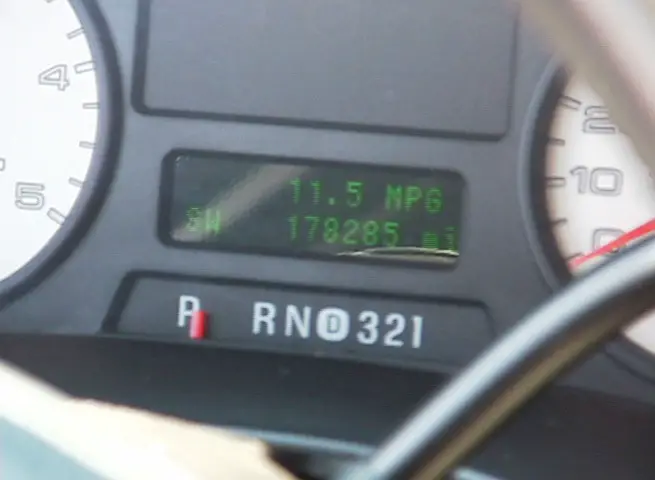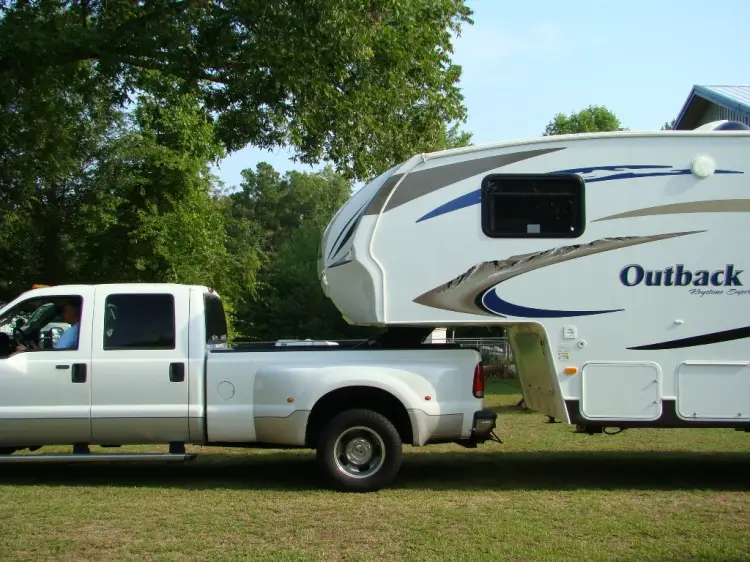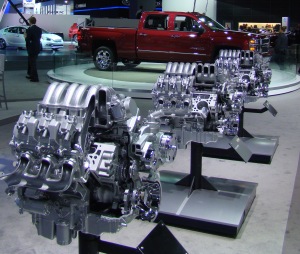How does the axle ratio affect fuel economy in modern day vehicles? Do you need a lower axle ratio to tow a trailer? Can truck manufacturers build trucks that meet stringent government imposed fuel standards while still offering the power and performance we expect from a truck?
Let’s start with some Axle Terminology
 Before we go any further let’s look at what a vehicle’s final drive/axle ratio is in the first place. To make it easier to understand the final drive axle or gear ratio you need a very basic understanding of what the different gears in transmissions and final drives are designed to do.
Before we go any further let’s look at what a vehicle’s final drive/axle ratio is in the first place. To make it easier to understand the final drive axle or gear ratio you need a very basic understanding of what the different gears in transmissions and final drives are designed to do.

A vehicle’s transmission is made up of different sets of gears that can be changed, allowing the vehicle to travel at different speeds. The gears used in the final drive (axle/differential) serve a couple different purposes.
1) The gears in the axle reduce the speed at the vehicle’s wheels.
2) The gears in the axle divide the torque between the two rear wheels.

On rear wheel drive vehicles power is delivered from the transmission to the rear wheels by way of a drive shaft. So, the axle ratio of a final drive assembly is basically a comparison of how many times the drive shaft rotates (power coming from the transmission) in relationship to how many times the rear wheels rotate. Axle ratios are expressed in numeric values. For the sake of an example a 3.73:1 axle/gear ratio means the drive shaft (or pinion gear at the end of the drive shaft) rotates 3.73 revolutions for each rotation of the rear wheels (or ring gear in the axle).
Keep in mind that a rpms play a key role in fuel economy, and that different axle ratios affect the vehicle’s rpms, especially at highway speeds. With that said you will soon see why some axle ratios are good for fuel economy while others are better suited for towing and power.
Fuel Economy Axles: For maximum fuel economy you want an axle ratio that is lower in the number of drive shaft rotations (pinion gear) for every tire rotation (ring gear). Examples of this would be a 3.21:1 and 3.42:1 axle ratio. These types of axle ratios result in lower rpms, which in turn result in better fuel economy. These axle ratios are not suitable for towing and hauling heavy loads.
Towing Axles: For maximum power and towing capability you want an axle ratio that is higher in the number of drive shaft rotations for every tire rotation. The reason for this is the lower gear sets (higher value numerically) put more low speed torque, or towing power, at the rear wheels. The results are, less acceleration is required to get the load you are carrying moving from a dead stop, but there is an increase in rpms at highway speeds. Examples of this would be 4.10:1 and 4.30:1 axle ratios. These gear sets are better suited for towing and hauling heavy loads.
 Note: The thing to remember here is different gear sets can drastically change a vehicle’s performance characteristics.
Note: The thing to remember here is different gear sets can drastically change a vehicle’s performance characteristics.
When vehicle manufacturers build trucks and SUVs the base, or standard model, vehicles usually come equipped with a higher final drive gear set (lower value numerically) to maximize fuel economy. The problem is if you purchase the truck to use as a work or tow vehicle, the higher geared axle is not going to do the job. This is why auto makers offer optional axle ratios, as well as engine and transmission options for the vehicles they build.
What Axle Ratio Do I Need?

Selecting an axle ratio really depends on how you plan to use the vehicle. If your truck is going to be used for towing and hauling loads you want a 3.90:1, 4.10:1 or 4.30:1 type axle ratio. This puts the power at the wheels, but will sacrifice some fuel economy in doing it.
If on the other hand, you need a truck that can tow a 7,000 pound trailer a couple weeks out of the year, but will be used as a daily driver the rest of the time, you want a compromise when it comes to the axle ratio. In this situation a 3.55:1 or 3.73:1 gear set would be a better choice.

It’s important you are not only aware of the different types and sizes of axle ratios, but that the truck or SUV you purchase is equipped with the axle ratio you want or need to accomplish your goals. You can take two trucks equipped identical to each other, with the only difference being the axle ratio, and the tow ratings can vary by several thousand pounds.
New Vehicle Technology

Today’s truck manufacturers are not only confronted with meeting stringent government imposed fuel standards; they also need to deliver a truck that meets consumer demands for power and performance. And I must say they are doing a good job at both. Through technology like direct fuel injection, continuously variable valve timing (VVT), cylinder deactivation, six and eight speed transmissions, and aerodynamic design auto manufacturers are finding effective methods to compromise between fuel economy, power and performance.
Truth be known, even with an axle ratio designed for towing, your fuel economy doesn’t suffer much in normal stop and go type driving simply because of the axle ratio. The loss in mileage comes more at highway speeds, and of course when you are towing or hauling heavy loads, which is to be expected. What I am saying is, a truck equipped with a towing axle will lose a percentage of mpg when traveling on the highway, but when you compare combined driving (daily stop and go and on the road driving) the loss is minimal.
Another consideration is your personal driving habits. This plays a major role in the fuel economy you will get, regardless of the axle ratio. I tested this premise myself using my 2500 Dodge truck equipped with a 5.7 Liter hemi engine and 3.73:1 axle ratio. I usually average 16.4 mpg driving at highway speeds of 65-70. One day when I was traveling on the interstate I decided to keep the speedometer on 60 mph vs. 65-70. The result was 18.2 mpg.
Of course there are many other factors that contribute to fuel economy, like the load in or behind the truck, weather conditions and vehicle upkeep and maintenance, but this demonstrates that fuel economy is not based on axle ratio alone.
The bottom line is fuel economy and towing axles are two distinctly different topics, but when you select the correct axle ratio for the job at hand, and combine it with new technology in engine and transmission design you can find a suitable compromise between the two.
For more information on RVs and tow vehicles check out my best-selling book titled The RV Book
Happy RV Learning,
Mark Polk
Visit our in depth RV Online Training site